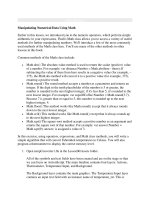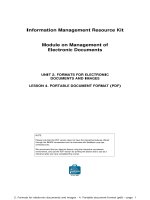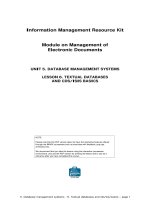ml note math fggfdgdfgf
Bạn đang xem bản rút gọn của tài liệu. Xem và tải ngay bản đầy đủ của tài liệu tại đây (34.89 KB, 2 trang )
Calculus/ˈkælkjələs/ (n) the type of mathematics that deals with rates of change,
for example in the slope of a curve or the speed of a falling object.
Phép tính
Derivative/dɪˈrɪvətɪv/ (n) a word or thing that has been developed or produced
from another word or thing.
Đạo hàm
Total Derivative
Tg = Đối/Kề or detal Y / detal X
Partial Derivative
Why do we need it:
When a function depends one 2 or more variables.
(For previous total derivative, a function only depends on one variable)
How do we calculate it:
Consider other variables as constants, like fix the surface and make it come back to
the function which depends one one variable only.
df/dx
Scalar/ˈskeɪlər/a quantity that has size but no direction.
Đại lượng vô hướng
Tensor/ˈtensɔːr/ One answer: In a given basis, a rank zero tensor is a scalar, one
number. A rank one tensor is a vector, n numbers (in n dimensions.) A rank 2 tensor
is an nxn matrix of numbers. A rank 3 tensor would be a cube of numbers, and so
on.
Another view: a rank 2 tensor is an object that takes two vectors as input and
outputs a number, and which is linear in each input. Einstein used the Riemann
tensor which takes 4 vectors as inputs and outputs a number. Roughly speaking,
that one says, “If in curved space I carry a vector and go in direction v1, and then
direction v2, and then I come back with -v1 and then -v2, what is the component in
the v3 direction of the change in the vector v4?”
The technical definition is that a tensor is a set of numbers that “transforms as a
tensor” under a coordinate transformation.
In short, tensors are linear transformations, the objects we study in linear algebra.









